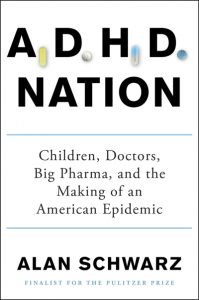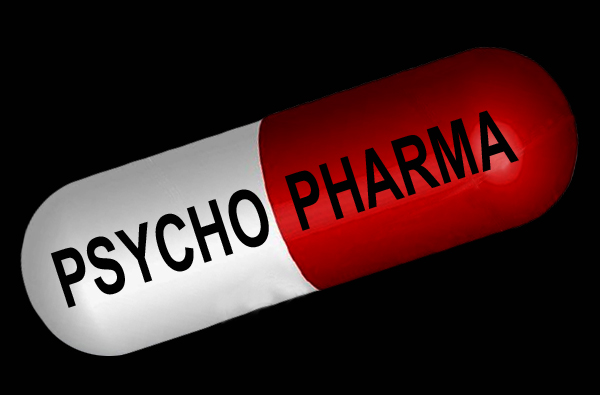A diagnosis based in marketing, not science
By Kelly Patricia O’Meara
Published by CCHR International
The Mental Health Industry Watchdog
November 8, 2016
The Mental health industry watchdog, Citizens Commission on Human Rights (CCHR), is sounding the alarm on false claims about the medical/scientific validity of an “ADHD” diagnosis, being marketed to the public via the pharmaceutically funded group, Children and Adults with Attention Deficit Disorder (CHADD).
In a recent promotional video called “ADHD is Real,” CHADD, which has received more than 8 million dollars in pharma funding since 2001, claims that “thirty years of brain imaging research show that the brain of a person with ADHD is different.”
This is marketing, not science.
Contrary to CHADD’s claims, in its only assessment of the ADHD diagnosis, during its Consensus Development Conference, the National Institutes of Health (NIH) stated, “We do not have an independent, valid test for ADHD,” and “there are no data to indicate that ADHD is due to a brain malfunction.”[1]
The fact is, if there were valid brain scan research confirming ADHD is “real,” that is due to a brain abnormality, there also would be an objective test to diagnose ADHD. No such test exists and CHADD is fully aware of this fact.
Despite its video claiming ADHD brains are “different,” CHADD’s website contains this disclaimer: “…there is no single medical, physical, or genetic test for ADHD…” and “basic neuroimaging research is being conducted to further delineate the pathophysiology of ADHD…. However, the research is not definitive enough for practical application of neuroimaging.”[2] In other words, neuroimaging (brain scans) cannot diagnose ADHD.
The research debunking CHADD’s claim also includes a 2003 paper published in The Journal of Mind and Behavior, which reviewed more than 30 of the neuroimaging studies on children diagnosed with ADHD claiming to show differences in their brains. This review revealed that most of the children had been given powerful drugs prior to the brain imaging, often for long periods of time, a factor which could account for any structural differences in their brains. According to the study authors, “we found that most subjects diagnosed with ADD or ADHD had prior medication use, often for several months or years.”[3]
The reality is that there is no scientific proof to support CHADD’s “ADHD is real” claim and, more importantly, psychiatric drug “treatments” prescribed for ADHD (Methylphenidate and Amphetamines) are Schedule II stimulants, which according to the Drug Enforcement Administration (DEA) themselves have a “high potential for abuse…”[4]
The DEA further explains, “The effects of amphetamines [which include Ritalin and Adderall] and methamphetamine are similar to cocaine…. Chronic abuse produces a psychosis that resembles schizophrenia and is characterized by: Paranoia, picking at the skin, preoccupation with one’s own thoughts, and auditory and visual hallucinations. Violent and erratic behavior is frequently seen among chronic abusers of amphetamines and methamphetamine.”[5]
The DEA, along with the United Nations International Narcotics Control Board (INCB), have severely criticized CHADD for its financial ties to the manufacturers of ADHD drugs that CHADD heavily promotes. [6]
 CHADD also came under criticism from The New York Times in the December 2013 article, “The Selling of Attention Deficit Disorder.“ In his article, Pulitzer Prize–nominated journalist Alan Schwarz states, “the primary A.D.H.D. patient advocacy group, Children and Adults with Attention-Deficit/Hyperactivity Disorder, or Chadd, was founded in 1987 to gain greater respect for the condition and its treatment with Ritalin, the primary drug available at the time. Considerable funding was provided several years later by Ciba-Geigy Pharmaceuticals, Ritalin’s primary manufacturer. Further drug company support helped create public service announcements and pamphlets, some of which tried to dispel concerns about Ritalin; one Chadd ‘fact sheet’ conflicted with 60 years of science in claiming, ‘Psychostimulant drugs are not addictive.’”
CHADD also came under criticism from The New York Times in the December 2013 article, “The Selling of Attention Deficit Disorder.“ In his article, Pulitzer Prize–nominated journalist Alan Schwarz states, “the primary A.D.H.D. patient advocacy group, Children and Adults with Attention-Deficit/Hyperactivity Disorder, or Chadd, was founded in 1987 to gain greater respect for the condition and its treatment with Ritalin, the primary drug available at the time. Considerable funding was provided several years later by Ciba-Geigy Pharmaceuticals, Ritalin’s primary manufacturer. Further drug company support helped create public service announcements and pamphlets, some of which tried to dispel concerns about Ritalin; one Chadd ‘fact sheet’ conflicted with 60 years of science in claiming, ‘Psychostimulant drugs are not addictive.’”
Schwarz further writes that “Chadd records show that the group has historically received about $1 million a year, one-third of its annual revenue, from pharmaceutical company grants and advertising. Regarding [Shire Pharmaceutical’s] support of CHADD, Mr. Casola [the Vice President of Shire] said, ‘I think it is fair to call it a marketing expense, but it’s an arm’s-length relationship.’”[7]
The “marketing expense” seems to be paying off. A statement made in CHADD’s “ADHD is Real” video asserts, “the financial burden (associated with ADHD) is estimated between $143 billion to $266 billion annually.” That study, was funded by Shire Pharmaceuticals and many of its authors have financial relationships with Shire.[8] So much for an arm’s-length relationship.
The reality is that the false marketing of ADHD by pharmaceutical front groups, like CHADD, has led to an epidemic of psychiatric drugging of Americas children. And while CHADD continues to produce false and misleading pharmaceutical-funded propaganda claiming “ADHD is real,” in actuality more than four million children and adolescents in the U.S. alone, including nearly 200,000 0-5 year-olds, have been prescribed dangerous, even life-threatening ADHD drugs, with no scientific/medical proof that ADHD exists. That’s the result of marketing, not science. And the only ones profiting from the mass diagnosing are the psychaitric-pharmaceutical industries and the groups they support.[9]
Kelly Patricia O’Meara is an award-winning former investigative reporter for the Washington Times’ Insight Magazine, penning dozens of articles exposing the fraud of psychiatric diagnosis and the dangers of the psychiatric drugs—including her ground-breaking 1999 cover story, “Guns & Doses,” exposing the link between psychiatric drugs and acts of senseless violence. She is also the author of the highly acclaimed book, Psyched Out: How Psychiatry Sells Mental Illness and Pushes Pills that Kill. Prior to working as an investigative journalist, O’Meara spent sixteen years on Capitol Hill as a congressional staffer to four Members of Congress. She holds a B.S. in Political Science from the University of Maryland.
REFERENCES:
[1] “NEWS COMMENTARY, NIH Consensus Report Highlights Controversy Surrounding ADHD Diagnosis and Stimulant Treatment,” Ethical Human Sciences and Services, Vol. 1, No.1, 1999.
[2] Diagnosis of ADHD in Adults, http://www.chadd.org/Understanding-ADHD/For-Adults/Diagnosis-of-ADHD.aspx, accessed 2 Nov 2016; The Science of ADHD, http://www.chadd.org/Understanding-ADHD/About-ADHD/The-Science-of-ADHD.aspx, accessed 8 Nov 2016.
[3] Jonathan Leo and David Cohen, “Broken Brains or Flawed Studies? A Critical Review of ADHD Neuroimaging Research,” Journal of Mind and Behavior, Vol 24(1), 2003, 29-56.
[4] Drug Schedules, Drug Enforcement Administration, https://www.dea.gov/druginfo/ds.shtml, accessed 8 Nov 2016.
[5] Drug Fact Sheet, Amphetamines, Drug Enforcement Administration, https://www.dea.gov/druginfo/drug_data_sheets/Amphetamines.pdf, accessed 8 Nov 2016.
[6] “Methylphenidate (A Background Paper),” U.S. Department of Justice, Drug Enforcement Administration, Oct. 1995; Report of the International Narcotics Control Board, 1995; Lawrence Diller, “The Business of ADHD,” PBS Frontline, http://www.pbs.org/wgbh/pages/frontline/shows/medicating/experts/business.html.
[7] Alan Schwarz, “The Selling of Attention Deficit Disorder,” The New York Times, 14 Dec 2013, http://www.nytimes.com/2013/12/15/health/the-selling-of-attention-deficit-disorder.html?_r=1&pagewanted=all&.
[8] Megan Brooks, “ADHD Takes Heavy Economic Toll,” Medscape, 12 Nov 2012, http://www.medscape.com/viewarticle/774298.
[9] IMS, Vector One: National (VONA) and Total Patient Tracker (TPT) Database, Year 2013, Extracted April 2014.


